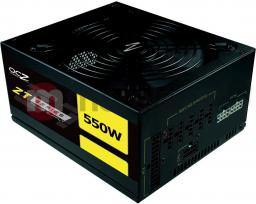

- #OCZ CORE SERIES V2 FIRMWARE UPDATE INSTALL#
- #OCZ CORE SERIES V2 FIRMWARE UPDATE DRIVERS#
- #OCZ CORE SERIES V2 FIRMWARE UPDATE FULL#
In this case the OCZ Vertex 100GB drive is said to have exceptional 4k write speeds at Que Depth 32, we didn’t use that setting but did modify the Random Write test to Random Write 4k, the updated configuration file we requested from OCZ should be random Read and Write 4k with Que Depth 32. That way the vendor doesn’t influence testing results, we don’t optimize for any particular drive, and testing is the same for every drive across the board with no chance of prejudice working its way in. Normally they are not optimized or altered in any way after receiving them. The configuration files were obtained from a trustworthy vendor (Not OCZ) who had no idea what we were going to use them for. In IOMeter we are using a preset configuration file for each test. G.Skill Titan 256 GB SSD (FM-25S2S-256GBT1) (MLC)Ģ WD VelociRaptor’s 300GB (In single and Raid0)Īny Attempt Copy This System Configuration May Lead to Bankruptcy Thermalright Ultra 120 RT (Dual 120mm Fans) Each test was performed 3 times and the average of the 3 test run is reported here.

#OCZ CORE SERIES V2 FIRMWARE UPDATE INSTALL#
That’s a more realistic test than strapping the drive in and testing it with a bare format or as a non-boot drive and it represents real life transfer rates, much like you can expect when you install and operate the drive in your own system. All of the drives tested were used as the primary boot drive during testing. We ran our usual battery of tests on the drive, and used it as the primary boot drive during testing. As with most SSD testing differences from run to run are minimal and the median result is a good indication of what you can expect from the drive. In the case of a pictorial benchmark we ran the bench 3 times and picked the median result. The Average of the three results are presented here. We ran all of the tests a total of 3 times and averaged those results. Nothing that may effect the outcome of the testing procedure can creep in. It’s the equivalent of doing a fresh load of Vista from the disc but takes a lot less time and ensures that every drive tested uses exactly the same OS load and drivers.
#OCZ CORE SERIES V2 FIRMWARE UPDATE DRIVERS#
It is the same test drive we’ve been using on all of our drive testing and is nothing more than a clean Windows load with all the drive testing software installed, as well as all the current drivers and patches for the OS. To test the OCZ Vertex 2 we cloned our test rig drive to the SSD.
#OCZ CORE SERIES V2 FIRMWARE UPDATE FULL#
OCZ informs us the utility should be ready for full functionality soon. Even partially functional it’s still nice. When it’s completely finished the OCZ Toolbox will be a handy little tool for working with your drive. The Security tab allows you to set a drive password, unlock the drive and securely erase the drive. The SF-1200 has performance close to the SF-1500 at a fraction of the cost so we can’t wait to get it on the bench and drive it until it screams. The SF-1500 is used in the OCZ Vertex Limited edition and the SF-1200 is used in the Vertex 2 lineup. OCZ has been testing the SandForce SF-1200 and SF-1500 controllers for months internally and during CES they made the formal announcement that OCZ would be bringing out the Vertex 2 series of SSDs using these two new controllers. There are other SandForce controller drives out there but this one uses a proprietary Firmware that allows it up to 50k IOPS making it in a class by itself. We’ve been waiting on a drive with the SandForce controller for a while and when OCZ approached us about taking a look at it we were eager to get it into the lab to take a look. The OCZ Vertex 2 utilizes the new SandForce SF-1200 controller. That firmware allows for up to 50K IOPS making it the fastest MLC SSD we’ve tested.

The OCZ Vertex 2 uses the new SandForce SF-1200 controller and proprietary OCZ firmware.


 0 kommentar(er)
0 kommentar(er)
